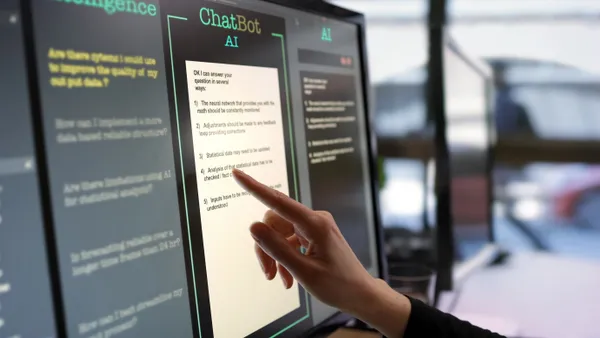Self-service resources are vital to the modern customer service landscape, but live agents are far from obsolete. Humans still play an important role, from helping solve complicated problems to assisting tech-adverse customers, and the same technology that powers modern chatbots can empower agents.
Live agents remain a necessity even if customers increasingly prefer self-service. The vast majority, nearly 9 in 10, of customer service journeys that begin with self-service go through multiple channels, according to a Gartner survey. Common secondary channels include phone, live chat and email.
Nearly all customers who experience a seamless channel transition report high customer satisfaction.
The key to handling the all-important transition well is data — which happens to be the foundation for both self-service and human assistance. As a result, companies can’t treat the two channels as “separate worlds,” according to Eric Keller, senior director in Gartner’s customer service research practice.
The two approaches should instead work together, he said. Self-service tools can capture specific information about what the customer was trying to do and relay that information to the person taking the call when a switch is made.
Live agents should also have information regarding the customer’s broader relationship with, and sentiment, toward the company to help them select the best script for the call, according to Nick Kramer, leader of applied solutions at SSA & Company.
Sharing that information with customers can enable better outcomes. For instance, a self-service platform can communicate wait times to the customer or help them set up a call back to make the switch feel seamless.
“Best practices can be summarized in one word: communication,” Kramer said in an email. “Information flow to the customer and to the live agent is the basis for a positive experience, even in challenging calls or suboptimal outcomes. The customer must be notified of the transfer and the reason for it, with the chatbot asking for their permission to transfer the ticket to a live agent.”
There is still work for companies to do in terms of communication. More than half of customer service agents say they lack context about the previous steps customers took in their journey, according to Keller.
This is an area where generative AI can bridge the gap between self-service and live agents, according to Kramer. Next-generation technology has the power to be even better than live agents, but it can also empower human workers.
“The power of generative AI to help make a live agent perform at a higher level will have a huge impact,” he said. “Product knowledge and history will be easier and faster to retrieve. Generative AI can suggest scripts or generate personalized points based on the customer history or a previous interaction with a chatbot, etc. Customer service will never be the same; it will in most cases be much better.”










